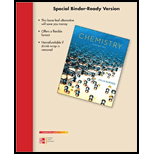
Concept explainers
Interpretation:
The given compounds react as an electrophile or a nucleophile is to be classified.
Concept introduction:
The compound capable of donating a pair of electrons to an electrophile to create a new bond, is known as nucleophile. It seeks a positive center. Lewis bases are considered as nucleophiles.
Negative charged species or electron rich species act as nucleophiles
All those compounds that have the tendency of attracting electron rich center, are known as electrophiles. They are considered as a positively charged or neutral species. Lewis acids are electrophiles.
Positively charged species or electron deficient species act as electrophiles.
In resonance structures, the electrons can move in order to help stabilizing the molecule and, the compound should have same number of electrons.
Want to see the full answer?
Check out a sample textbook solution
Chapter 25 Solutions
Chemistry - With Access (Looseleaf) (Custom)
- What is the nucleophile and electrophile?arrow_forwardWhich of the following is/are false concerning nucleophiles donates an e- pair to an electrophile to form a chemical bond they are all molecules or ions with a free pair of electrons or at least one pi bond they are Lewis acids they are attracted to a full or partial positive chargearrow_forwardHow will I determine if a neutral compound is an eletrophile or a nucleophilearrow_forward
- Is this a base or a nucleophilearrow_forward1. Which among these can make a molecule nucleophilic? a.double bondsb.positive chargec. incomplete octet 2. Which among these can make a molecule electrophilic? a.Triple bondsb.positive chargec. radicalsarrow_forwardIdentify (label) the electrophile and the nucleophile in the reaction and add curved arrows to the following polar reactions to show the flow of electrons:arrow_forward
 Organic Chemistry: A Guided InquiryChemistryISBN:9780618974122Author:Andrei StraumanisPublisher:Cengage Learning
Organic Chemistry: A Guided InquiryChemistryISBN:9780618974122Author:Andrei StraumanisPublisher:Cengage Learning
